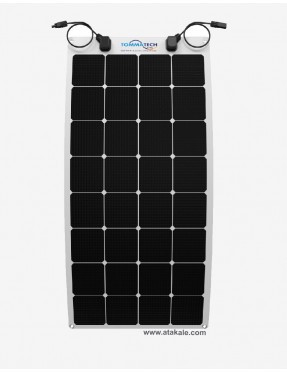KESİNLKLE PANELLERİ BÜKMEYİNİZ, KATLAMAYINIZ MONTAJ ESNASINDA DÜZ VE SARSMADAN TAŞIYINIZ
YARI ESNAK PANEL İZİN VERİLEN DEĞERDEN DAHA FAZLA BÜKÜLÜRSE, TAMİRİ MÜMKÜN OLMAYACAK ŞEKİLDE KULLANILMAZ HALE GELİR
TALİMATLARA AYKIRI DAVRANILARAK KULLANILAN ÜRÜNLER GARANTİ KAPSAMINDA DEĞİLDİR
BU ÜRÜN SON KULLANICILARIN EĞİTİMSİZ SERTİFİKASIZ VE YETKİLİ SERVİS OLMAYANLARIN KURACAĞI BİR ÜRÜN DEĞİLDİR
ÜRÜN TEK BAŞINA KULLANILAN BİR ÜRÜN DEĞİLDİR, SON KULLANICILAR BU ÜRÜNÜ ALMAMASI GEREKİR. BU ÜRÜN FİRMALAR VE YETKİLİ SERVİSLER TARAFINDAN KULLANILIR
Tüm kurulumlar, geçerli elektrik yönetmeliklerine uygun olarak gerçekleştirilmelidir.
Modül içinde kullanıcı tarafından bakımı yapılabilecek hiçbir parça yoktur. Modülün herhangi bir parçasını onarmaya çalışmayın.
Kurulum sadece kalifiye personel tarafından yapılmalıdır. Aksi taktirde garanti geçersiz olur
Modüllere zarar verebileceği ve garantiyi geçersiz kılabileceği için modüllerin üzerinde durmayın, düşürmeyin, çizmeyin veya nesnelerin düşmesine izin vermeyin.
PANELLER ÜZERİNDE YÜRÜMEYİN.
PANOLARI ELEKTRİK KABLOLARI VEYA BUAT KUTUSU İLE TAŞIMAYIN.
Bir an için bile olsa modüllerin üzerine herhangi bir şey koymayın çünkü oluşan kalıntılar yüzeye zarar verebilir veya leke yapabilir.
Ön levha veya arka levha yırtılırsa, herhangi bir modül yüzeyi veya modül çerçevesi ile temas elektrik çarpmasına neden olabilir.
Kırık veya çatlak J-kutuları, kablolar ve/veya konektörler, elektriksel tehlikelerin yanı sıra yırtılma tehlikeleridir. Müşteriler, bu tür modülleri hizmetten kaldırmalıdır.
ve geri dönüşüm talimatları için SunPower ile iletişime geçin.
Paneldeki kırık veya çatlamış metal şeritler elektriksel tehlikelerdir. Müşteriler, bu tür modülleri hizmetten çıkarmalı ve geri dönüşüm için SunPower ile iletişime geçmelidir.
Talimatlar.
Modülleri ıslakken veya şiddetli rüzgar dönemlerinde kurmayın veya tutmayın.
Modülün üzerinde veya yakınında su birikmesine izin vermeyin.
SunPower, 40 mm'ye (1,5”) eşit veya daha büyük bir minimum kablo bükülme yarıçapı önerir.
SunPower esnek paneli hangi uygulamalarda kullanılır?
Esnek güneş panelleri öncelikle, kamp, avcılık,tekne, yat, gemi , denizcilik, karavan, askeri, mobil , taşınabilir, film yapımları uygulamarında kullanılır. Ayrıca elektrik kesintileri gibi şebeke dışı durumlarda cihazlara ve küçük cihazlara güç sağlamak için kullanılabilen güneş enerjisiyle uyumlu aküleri şarj etmek için kullanılır.
Birçok yeni karavan, seyahat römorku, yardımcı aküye güç sağlamak için güneş enerjisi çıkışlarıyla enerji takviyesi yapılmaktadır. Esnek güneş panellerimizle uyumlu olması için kabloların bir MC4 konektörüne sahip olduğundan emin olmanız gerekir. Olmazsa, bir adaptör satın almanız gerekecektir.
Buna ek olarak, birçok üretici veya kuruluş, araçlara veya diğer büyük ekipman türlerine güç sağlamak için güneş enerjisiyle uyumlu şarj için araba aküleri gibi 12V aküleri şarj etmek için özel aparatlar sağlanmalıdır. Akü cihazlarınıza giden voltajları düzenleyen bir şarj kontrolörü de dahil olmak üzere ek ekipman satın almanız gereklidir. Özellikle elektrikle ilgisi az ve teknisyen olmayanların, amatör olarak kedni projesini yapanların daima dikkatli olması gerekir, ve bunun tehlikeli ve ürünlere zarar verebieceğini aklından çıkartmamalıdır.
SunPower esnek panelleri cihazları doğrudan şarj cihazına bağlanırmı?
Her esnek güneş paneli, MC4 uyumlu bağlantı kablolarıyla (erkek ve dişi) gelir. Bir MC4 konektörü, 50 ila 150 watt aralığındaki paneller için popüler bir güneş çıkış bağlantısıdır. SunPower esnek güneş panelleri, aknüz, şarj kontrolörünüzün veya diğer cihaz(lar)ınızın MC4 konektörlü kablolara sahip olmasını gerektirir. Uygun bir adaptör de kullanabilirsiniz. Ancak, MC4 konektörleri, akım veya voltaj seviyelerini kontrol eden herhangi bir elektronik bileşen içermez. Bu yüzen Sunpower esnek panelleri mutlaka bir şarj kontrol cihazıyla bilrikte kullanmanız gerkmektedir. Uyumluluğu sağlamak için sisteminizin her bir bileşeninin elektriksel çalışma koşullarını sağlamanız gerekir.
Şarj ne kadar sürer?
Bu, panel vat miktarınıza, akü vat-saat (Wh) kapasitenize (depolama kapasitesi ölçümü) ve hava durumuna bağlı olacaktır. Saatte panelin gücüne bağlı olarak 50Wh,100Wh,130Wh ,145Wh 150 Wh ,güçelerindeki bir panel akünüzü kaç saatte dolduracağını hesaplamak için , Akü gerilimizi Akım ile çarpın ve Panel gücüne bölün. Yaklaşık size kaç aatte şarj edeceğini gösterecektir. Örnek 12V 100AH Akü 1200WH Dır/ 130W bir panel saatte 130W üreteği için yaklaşık 11 saatte şarj edecektir.. Ayrıca, 100 watt'lık bir panel, aynı miktarda güneş ışığına maruz kalan 50 watt'lık bir panelden daha hızlı bir aküyü şarj edecektir.
Şarj süresi hava, gölge, günün saati, akünün yaşı ve kullanımı, şarj kontrol cihazının verimliliği, güneş panellerinin yerleşimi ve diğer operasyonel faktörlerden etkilenecektir. Panel watt uyumluluğunun yanı sıra tahmini şarj süreleri için güneş enerjisiyle uyumlu olduğundan emin olun ve panelin watt değeriyle uyumlu olduğundan emin olmak için her zaman akünün şarj özelliklerini kontrol edin.
Daha yüksek akü kapasitesi (150 Wh'den fazla) için 100 watt'lık bir panel kullanmanızı öneririz. Ancak bunu yapmadan önce lütfen şarj ettiğiniz aküün bu watt ile uyumlu olduğundan emin olun ve uyumlu bir şarj kontrol cihazı kullanın.
Güneş enerjisiyle uyumlu bir akü güç sağlamak için SunPower esnek panelimi kullanıyorum. Nasıl kurmalıyım?
Öncelikle akünüzünb şarj kablosunu paneldeki MC4 bağlantılarına bağlamanız gerekir. Ardından panelinizi güneşte bırakın. Paneli güneşe doğru eğmenizi öneririz. Bu, panelin gün boyunca birkaç kez hareket ettirilmesini gerektirebilir.
Kamp yapıyorsanız veya avlanıyorsanız, paneli desteklemek için bir kamp sandalyesi, saklama kutusu veya spor çantası kullanabilirsiniz. Ayrıca, akünüzü gölgede tutmak için panelin arkasına koymanızı veya pili güneşten korumak için ekstra uzun bir kablo satın almanızı öneririz.
Temel işlevsellik için gerekli olmasa da, özellikle birden fazla güneş paneli kullanan sistemlerde uyumlu bir şarj kontrol cihazının kullanılması şiddetle tavsiye edilir. Uyumlu bir şarj kontrolörü, güneş panellerinden aküye ve aküden cihazlarınıza giden voltajı ve akımı düzenler. Aşırı şarjı, aşırı boşalmayı ve aşırı yüklenmenin pilin ve aygıtlarınızın zarar görmesini önleyebilecek bir şarj denetleyicisi önerilir.
SunPower flex panelleri üzerinde yürünebilir mi?
Hayır, tavsiye etmiyoruz. Flex modülleri, düzenli adım atma, hücre çatlamasına neden olabilir ve hücreler elektriksel bağlantıyı sürdürürken, çatlaklar Maxeon Solar Technologies'in kontrolünün ötesinde bir miktar güç kaybına neden olabilir. Ayrıca panellerin üzerinde yürümek garantiyi geçersiz kılacaktır.
Kozmetik kalitesi panelin performansını etkiler mi?
Üretim hattının sonunda her bir panel elektriksel olarak test edilir ve kozmetik kriterler açısından denetlenir. Kozmetik sınıfı ne olursa olsun, kozmetik etkiler performansı veya güvenilirliği etkilemez.
Akü Şarj Süreleri Yaklaşık
Tamamen Boş Bir 100AH Jel Akü 130W bir esnek panelle Haziran ayında teknenin karavanın sütüne tamamen yatay montaj edildiğinde , 2 gün sabahtan akşama kadar ancak dolar. Bu esnada hiçbir enerji çekilmediğini farzediyoruz. Ürün alırken bu bilgiyi diğer ürünler için kıyaslayabilrisiniz





















































